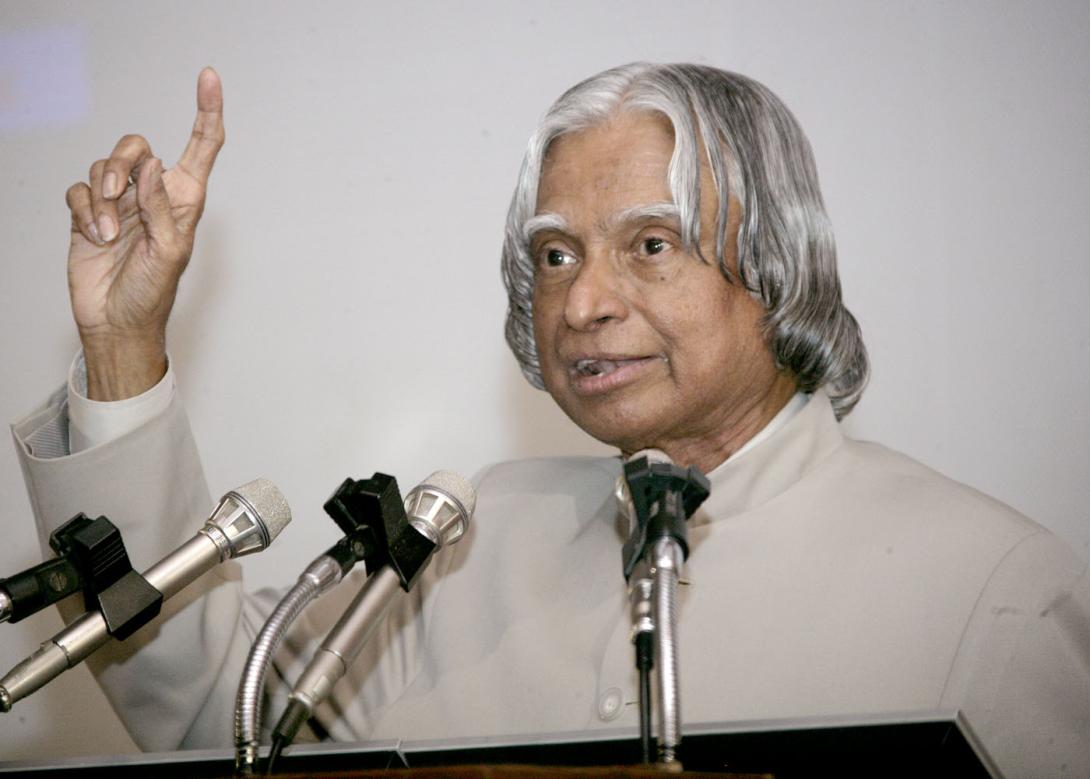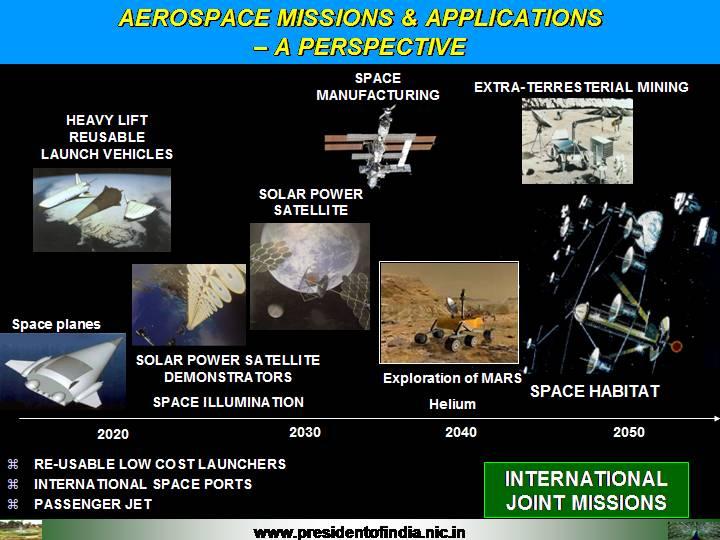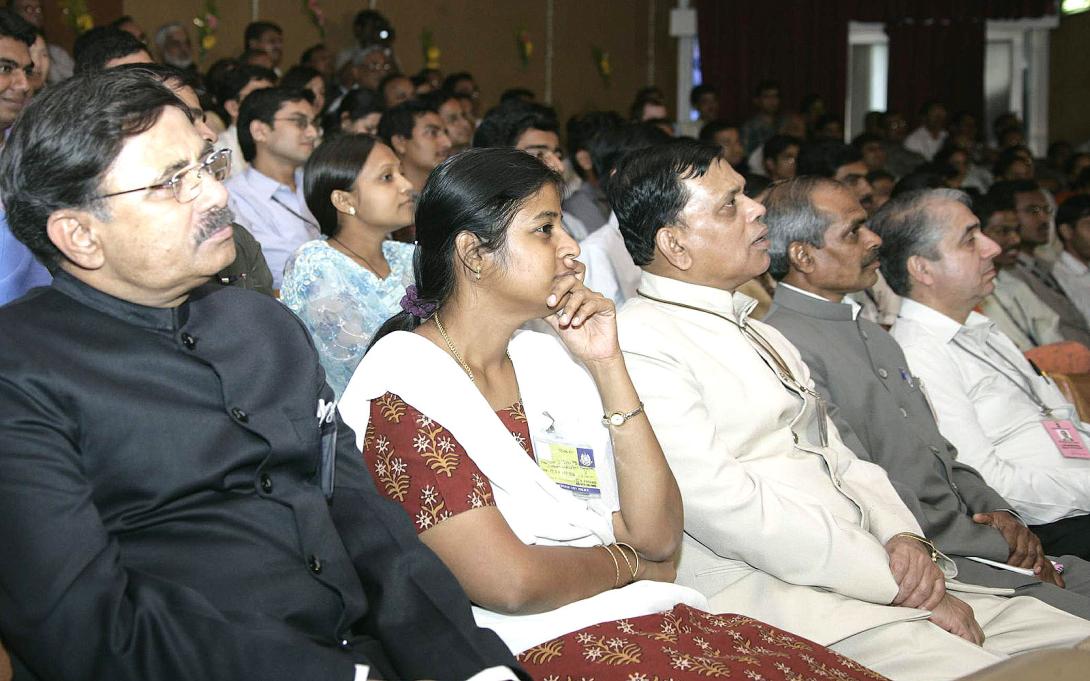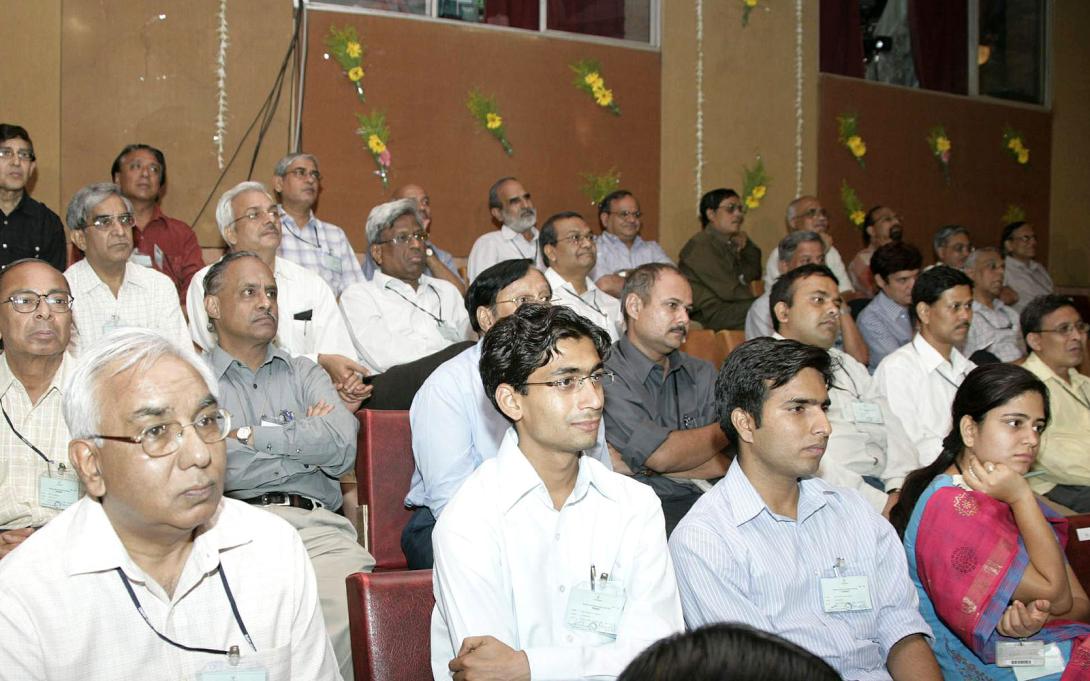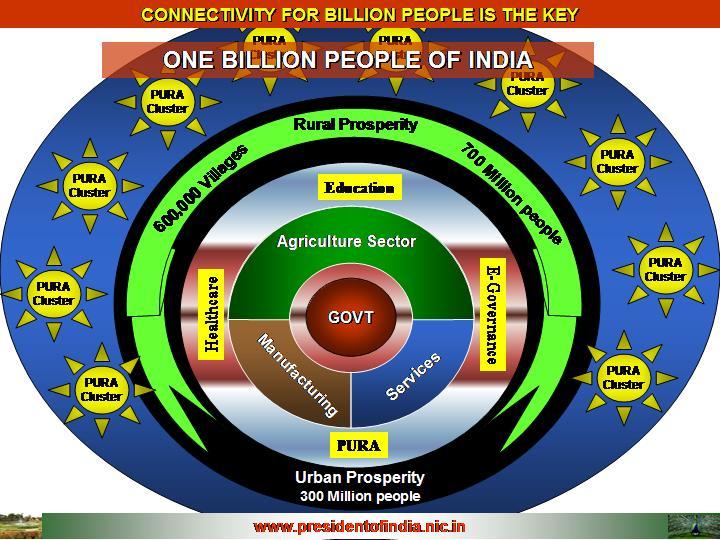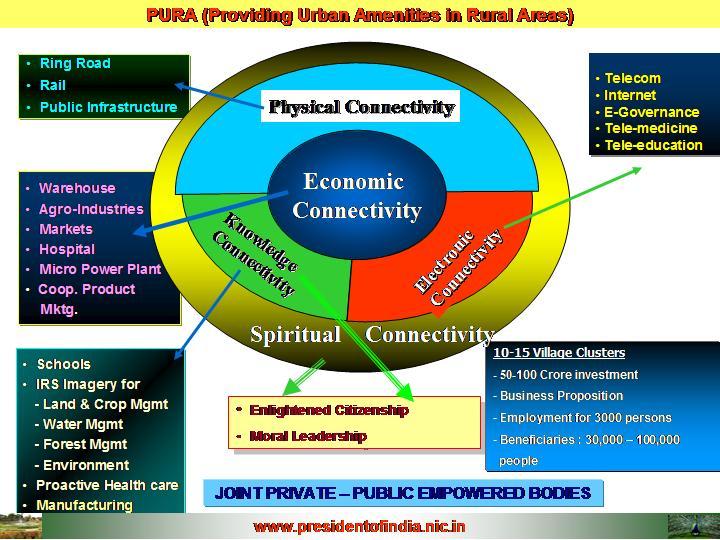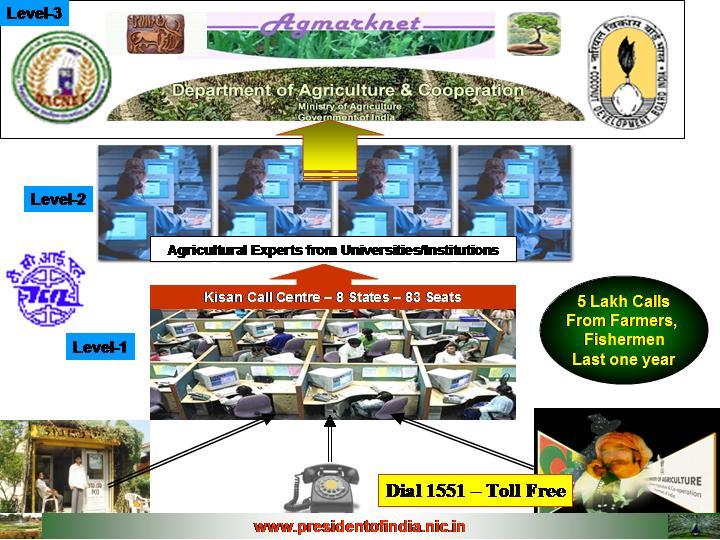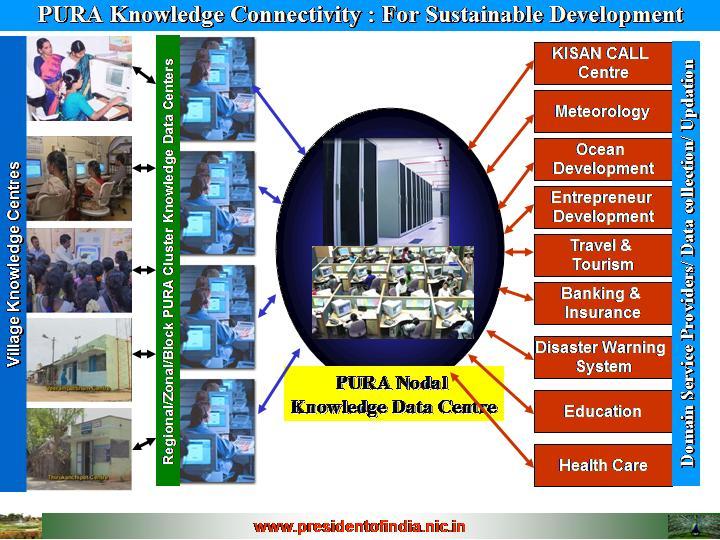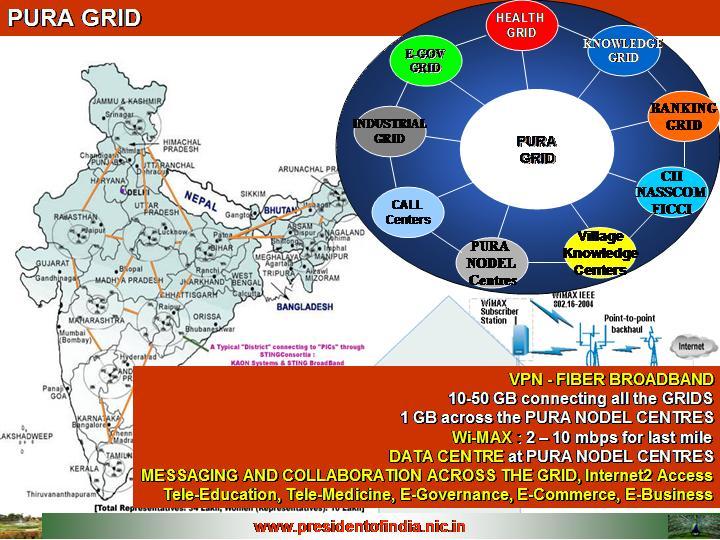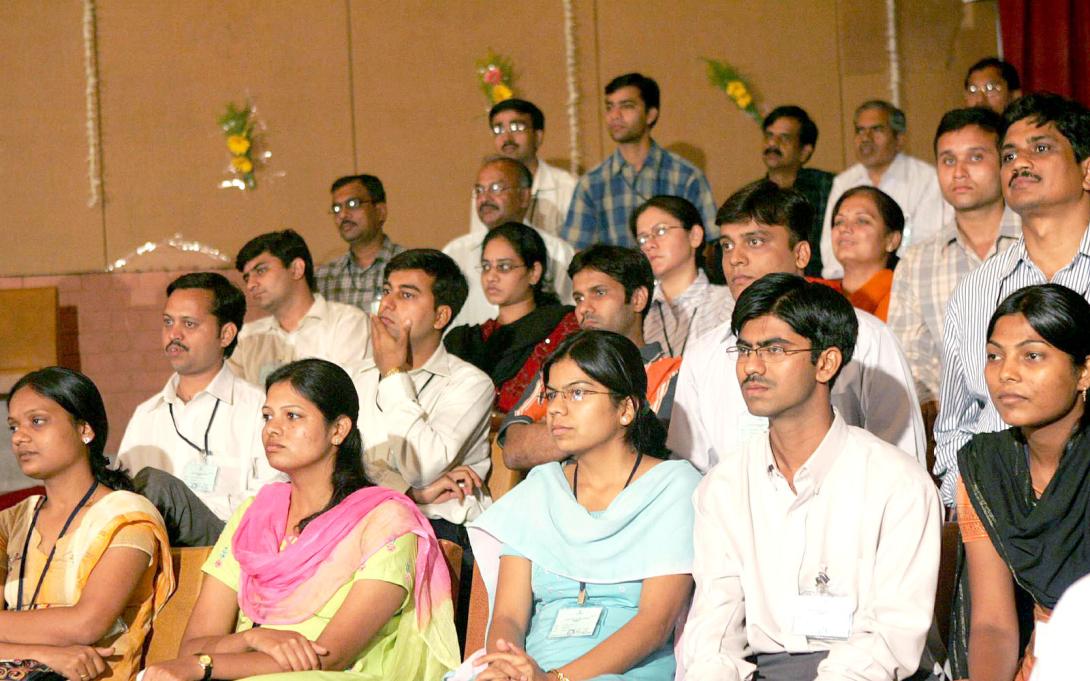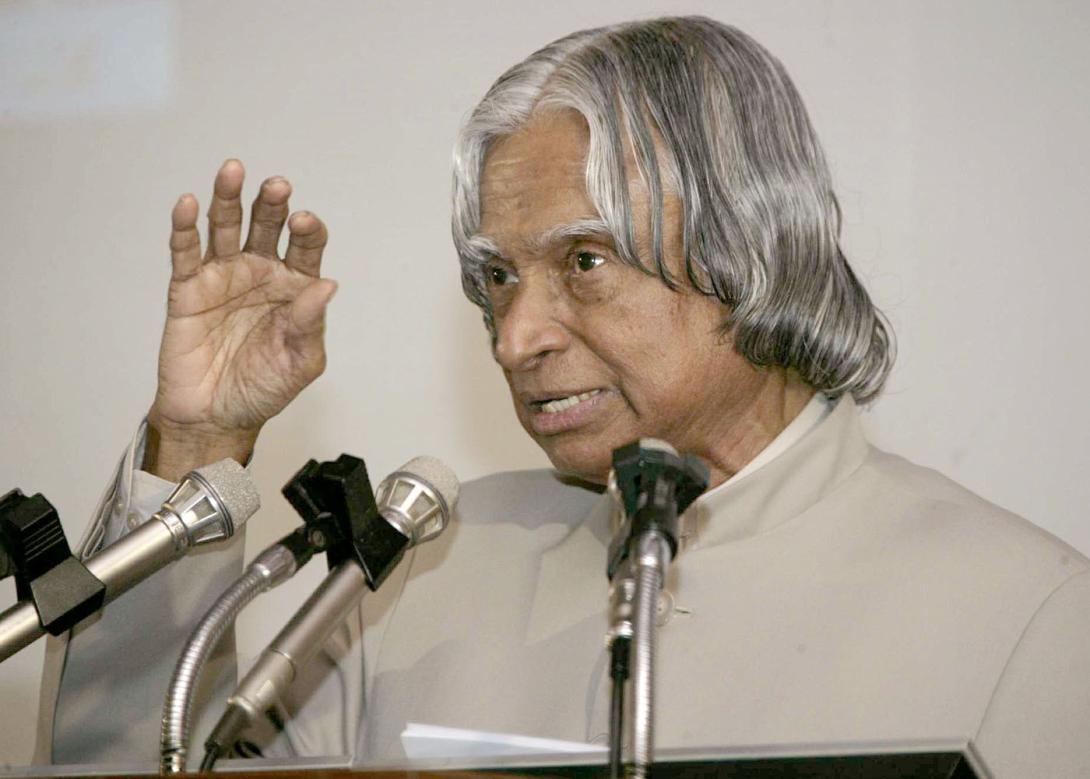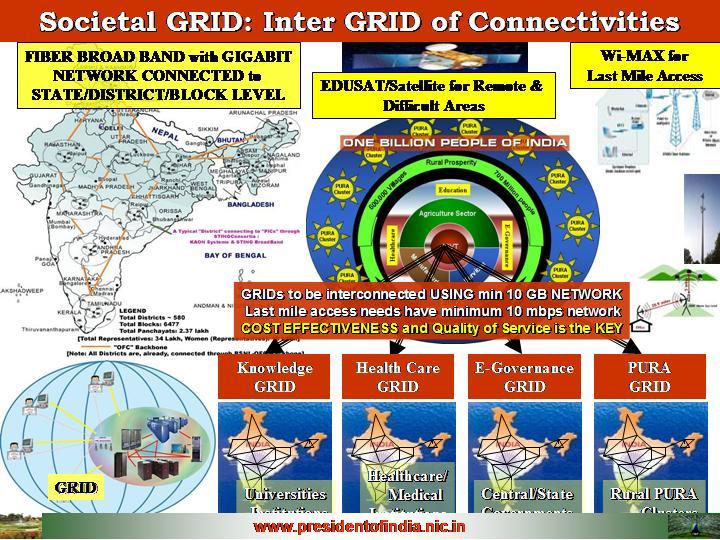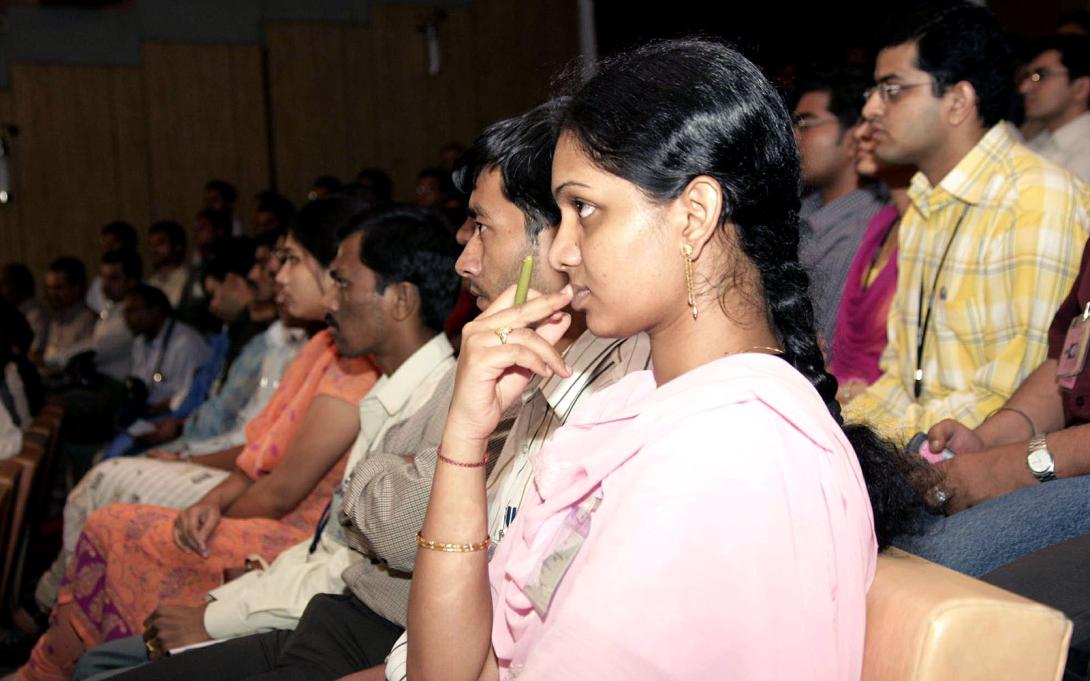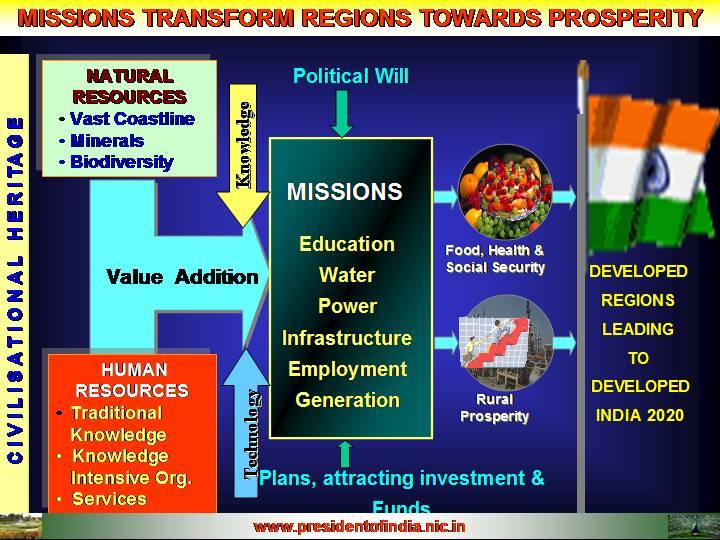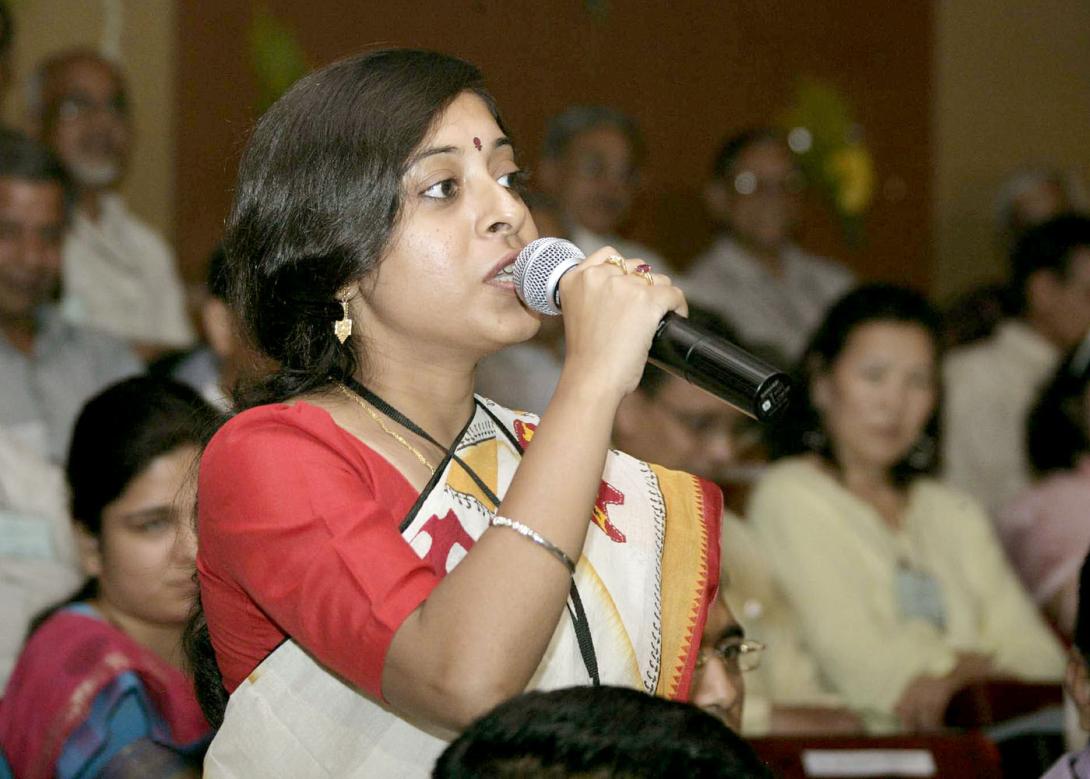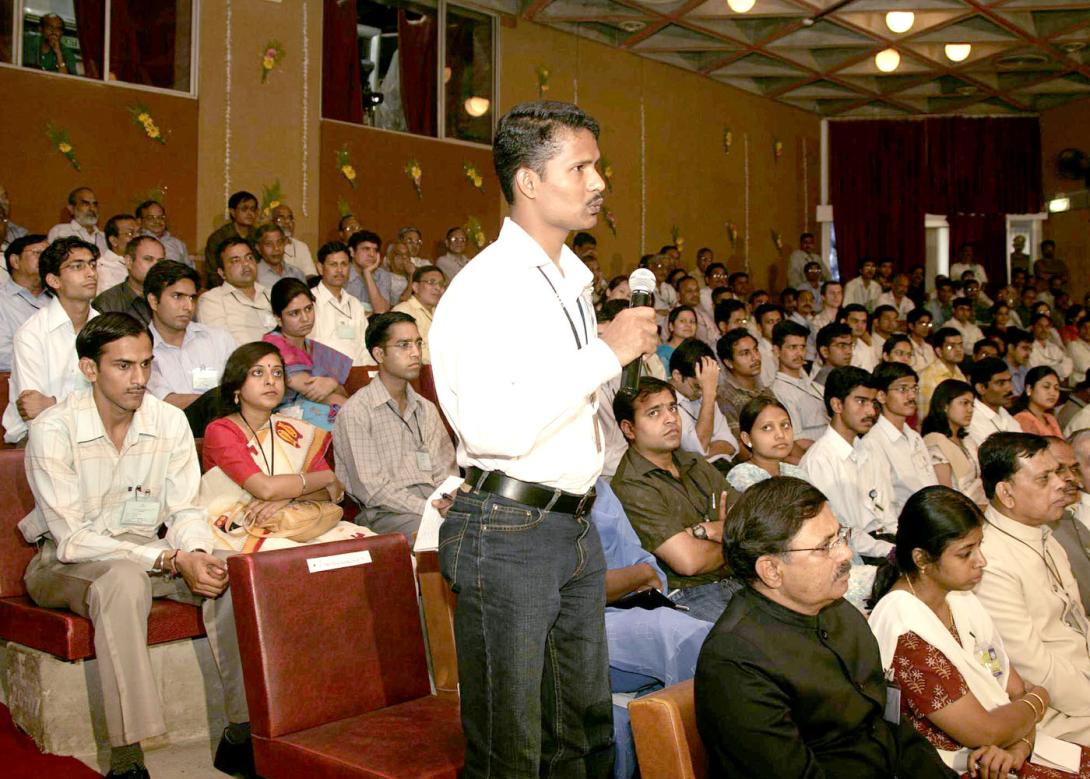Interaction With Scientists of Space Application Centre, Ahmedabad
Ahmedabad : 28-04-2006
Vision for Space Application
" Explore and explore
there are many and many
bright, livable, beautiful habitat
in outer space
then we have to conquer
the light year distance?
Friends, 2007 - 2008 is a very important year for ISRO, as you will be graduating from Space power in earth orbits (Geo-Synchronous orbit, Polar orbit and Earth orbits) to moon orbit. Of course, the scientific results that you will be expecting from the payloads that you build for the moon observations will be far more revealing and challenging. You will be building, a 50 kg payload that will land on the moon to study the geological structure of the moon and atmospheric variations, explore the exciting world of our beautiful moon. Friends, as you all know, moon is a very important for the world, because it has the potential to become an intermediate space station between earth and Mars. Moon can be visualized, to become a space industrial center, particularly with all its frozen helium. Helium may become one of the most sought after resources when the world turns to production of energy through fusion. This energy produced using helium in the moon, can also energize the vehicles for transporting materials from the moon to man?s future habitats in Mars and to his natural abode, the Earth.
SAC: Missions
Since the specialization of Space Application Center (SAC) is the building of high quality state of the art payloads, I would like to discuss, how your work and your mission are very important to the nation and in what way you will be able to contribute to the development of rural India through the programmes such as EDUSAT.
SAC has made a unique and distinctive contribution in all our remote sensing satellites by providing stereo cameras. This has put India in the forefront of high resolution remote sensing in the world. Similarly, SAC is known for building transponders working at various frequency bands and radiometers which are used in operational communication satellites and in our meteorological satellites. Of course the challenges for SAC will be many during the next ten years. As the geo-synchronous orbit gets crowded by the communication and military satellites of the developed world, there may be a need for graduating into geo-stationary satellites with higher frequency transponders of Ka-band and millimeter band. This will allow more satellites and possibly larger mission satellites to be put into the geo-synchronous orbits in the future.
Refueling, Repair & Maintenance of Satellites in Geo Orbit
Over a period of time, just like we talk about e-waste, we will have the challenge of disposing off space waste if we do not take internationally coordinated common programme in the near future. A world body: a task team must be formed to periodically undertake missions to re-fuel, repair and maintain, satellites without prejudice to which country it belongs to.
India with its well developed, launch vehicle and satellite programmes may become one of the strong partners and leaders in this world body. It can also become an economically lucrative proposition. The challenge that SAC, Ahmedabad will face in this new direction, in space would be to build payloads that repair payloads in an autonomous environment without manual intervention. The future satellites and payloads have to be designed with self healing capability and midlife remote maintenance.
Now, I would like to spend some time on the application, which is also your core competence. Of course, SAC is the birth place for the SITE programme and Experimental Satellite Communication Earth Station (ESCES). You have come a long way from these programmes to the EDUSAT and CARTOSAT.
EDUSAT has the promise of connecting every citizen of the country in his quest for knowledge. SAC can become the source of knowledge and wisdom for connecting the entire country particularly the rural India, not only for education, but also for health, commerce and entertainment. This will form an important component of the developed nation and a societal mission of which SAC can be proud of.
How to connect India? - A Societal mission
a. Connecting India means - connecting 600,000 villages for knowledge, for health, for education and occupation that means capacity building.
b. Societal GRID
c. How ISRO can be a partner in Bharat Nirman Programme, particularly in the creation of PURAs.
Characteristics of the Rural (Seven thousand PURA) Grid
For providing the knowledge connectivity to the PURA complexes, Village Knowledge Centers will act as frontline delivery system. I visualize establishment of village knowledge center in the Village Panchayat to empower the villagers with the knowledge and to act as a local center for knowledge connectivity for the villagers within the overall framework of PURA.
VKC: The Village Knowledge Centre should provide the essential data required for the targeted population such as farmers, fishermen, craftsmen, traders, businessmen, entrepreneurs, unemployed youth and the students. It has to be acquired by visiting the village, talking to the rural people, by understanding their requirement and core competence. Providing meteorological data for both farmers and fishermen has to be area specific, covering say 20 or 30 villages in the vicinity of sea coast or in the farming area. Local relevance of information offered is essential. Users have simple needs of information but often it is a tough problem for system integrators because of the need of updation of data. Trained manpower with experience have to be deployed to generate information which can explain to the people in simple terms the meteorological data, weather data, marketing data on fish, agricultural and other rural commodities. These data have to come from various connected institutions which provide the service to the people on a timely basis periodically. But the transformation of data into user friendly information on a regular updated basis is the real challenge. The main focus of the Village Knowledge Centre should be to empower the youth to undertake development tasks of the villages and establish the rural enterprises which will provide large scale employment to the youth of the village. So, it is essential to skill enable and knowledge enable through the Academic institutions, industry, banking and marketing institutions. VKC should act as a facilitator. Blended knowledge is a better knowledge.
Infrastructure and Connectivity: A low cost multi-task handheld computer with GPS and wireless mobility should be developed by the private industries and organizations and should reach the fishermen and farmers in different parts of the country. They should add value to this tool for their benefit to increase their earning capacity. Village Knowledge Centre should have a computer terminal, wireless (Wi-Max) connections or fiber broadband or satellite connectivity to connect to the Nodal Centers for acquisition of knowledge and dissemination of updated real time data.
PURA Nodal Knowledge Data Centre
Ministry of Agriculture has established Kisan Call Centre which provides valuable and timely knowledge support to the farmers and fishermen. Similar Domain Service Provider Call centers are required in the field of Commerce and Industry, Entrepreneurial skill Development and employment generation, Travel and Tourism, Banking and Insurance, Meteorological forecasting, Disaster Warning systems, Education and Human Resource Development and Health care.
These call centers will act as a service provider to the PURA Nodal Knowledge Data Centers located in the PURA Complexes, which in turn will provide the area specific and customized knowledge to the Village Knowledge Centers in the villages in a holistic manner. This delivery will depend on the availability of robust connectivity to different parts of the country. This forms the PURA GRIDs which draws information from the other GRIDS and will act as a catalyst for the societal transformation in the rural areas.
So far I have discussed with you on the necessity for establishing PURA GRID. Now I would like to discuss on how the various connectivities can result in Societal GRID across the country to fulfill the mission objective of entering into a knowledge society.
Connectivities: Societal GRID
Knowledge sharing, knowledge utilization and knowledge re-use is very vital by all constituents of the society for promoting non-linear growth. Societal Grid consists of:
1. Knowledge GRID - Inter connecting universities with socio-economic institutions, industries and R&D organizations.
2. Health Care GRID - Inter-connecting the Health Care institutions of Government, Corporate and Super specialty hospitals. Research institutions, educational institutions and ultimately, Pharma R & D institutions.
3. E-Governance GRID - Inter-connecting the Central Government and State Governments and District and Block level offices for G2G and G2C connectivity.
4. PURA Knowledge GRID - Connecting the PURA Nodal centers with the Village knowledge centres and Domain service providers. Since this is the backbone for rural development, all other GRIDs will infuse the knowledge into this GRID for sustainable development, healthcare and good governance. For example, five of the Periyar PURA villages have now connected using Wi-MAX connectivity. Integrated Village knowledge centers will act as an inter-connected delivery mechanism for tele-education tele-medicine and e-Governance services apart from individual access by the people, within and between the Village Knowledge Centres through the PURA Grid.
We have so far discussed all the four connectivities required for the societal transformation. These connectivities can form the basis for providing platform for societal transformation leading to empowerment. This will blossom with the enabling environment of trust and confidence in the overall system.
Suggested Research Areas for Space Application Centre
I would like to suggest the following research areas to be undertaken by Space Application Centre.
(a) Monsoon prediction worldwide is known. But accurate and timely prediction of onset of monsoon is a global research priority. Further, the quantum of rainfall in a particular area within a specified duration is not being determined by the present monsoon prediction system. Recent heavy rains in Mumbai, Chennai and Hyderabad and Katrina hurricane in US has created enormous loss of life and property. This brings out the necessity for global monsoon research for determining intensity and quantum of rain in a particular cloud condition. A mathematical model has to be evolved in predicting the quantum of rain for the particular cloud conditions. With this model space application scientists should attempt to provide the information for the particular cloud condition, how much rain will come in what period through the use of Polarimetric radar.
(b) Many of the countries in the world have experienced successive calamities driven by the nature. Till recently, the researchers world over had been pursuing research in unconnected ways, in Climate, Earthquake, Ocean Sciences and Earth Sciences, without realizing the latent but tight coupling between these areas. This new realization has prompted many countries to pursue the interdisciplinary area of research which is now known as Earth Systems Science. It is in fact fast emerging as an area of convergence between Earth, Climate, Ocean, Environment, Instrumentation and Computer Sciences. I strongly suggest that Space Application Centre should mount a programme in this emerging area of Earth Systems Science which will use information received from multiple satellite namely communication satellite, remote sensing satellite and meteorological satellite on a complimentary mode. This will call for a dedicated, cohesive and seamless integration between researchers in multiple areas and in multiple organisations. It is truly a science and its intensive results would make our planet safe and prosperous.
c) Friends, as you will knowing, during my visit to Russia, Iceland, Switzerland and Ukraine in 2005, I proposed a Youth Satellite. You have to participate in the mission of youth satellite, philosophically and technologically. It is a global communication medium for the youth to conduct space meet and space conference and above all to bring the young minds and ignite them with a high purpose life.
Conclusion
Today, nation?s growth is critically driven by connectivity and communication. You are blessed with the technology, enthusiasm and commitment that can provide an answer to the nations needs. Very rarely, organizations like yours get a chance to steer the nation?s destiny and make her dreams come true. You can give connectivity to the billion people and open up the opportunities for them to prosper in various domains of economy. The satellite technology has the ability to reach out to every nook and corner of the country and make almost any inaccessible location an accessible one. We can even become a role model to the other five billion people living across the world.
My best wishes to the members of SAC, ISRO for success in their mission of using the connectivity as a driver for economic growth and prosperity. I wish that your ability to electronically connect the nation will also grow side by side with your dreams to connect planet Earth to Mars through the moon.
May God bless you.
Question and Answer Session
1. How far satellite communications can improve the economy of India?
- Ms. Moumita Dutta (SAC), Electro-Optics
Ans: The satellite is the only means for communication to remote areas in the country where other means of communications are not there. EDUSAT is one good example for providing cost effective quality education to remote rural areas. Similarly, tele-medicine is able to provide quality medicare to the people living in remote areas. Also, satellite based communication can enable technological, commercial and marketing information to the farmers through village knowledge centre.
2. How far benefits of space applications have really reached rural India?
- Shri K.S. Srinivasan (VSSC), Computer Science
Ans: Through remote sensing we can find the overall agricultural production. Also, the meteorological department provides regions specific information to the farmers so that they can use the data for intelligent farming operations. Ground water availability can be seen with high precision. Fishermen can use the satellite data for locating the fish school.
3. Can we use nuclear fusion energy to propel launch vehicles?
- Shri Rahul Sharma (DECU), Electronics
Ans: Fusion, which releases energy by combining rather than splitting atoms, could in principle supply gigawatts of clean power. However, fusion propulsion systems as we understand them today would be very big weighing hundreds of tons--although the size might come down with research. As scientists we can never say that nuclear fusion energy will not be used for such a mission. However, we have to first use fusion energy for static applications.
4. Is the pace of development of science and technology in the country commensurate with the President?s vision to see India as a developed country by 2020?
- Shri Rajshekhar (DECU), Electronics
Ans: We have made considerable progress in the areas of ICT, pharma, automobile, automobile spare parts, energy, communication etc. which is essential for transforming India into a developed nation by 2020. Similar progress is also being attempted in other areas.
5. Russia / Ukraine have developed capability for launch of six tons payload from sea. When can India achieve it?
- Shri Naveen Kumar, Civil Engineer
Ans: Launching from sea for Ukraine and Russia is useful since they want to be closer to the equator and launch. Such a situation is not required for India. However, India has plans to achieve 4 tons launch capability by 2008. Within another five years we should be able to realize 6 tons launch capability.
6. How thrust can be given to quality health services in India?
- Shri Dharmesh Bhatt (DECU), Developmental Commn. (Producer)
Ans: For providing thrust to quality health services the ratio of doctors to people has to be raised at least to the level of 1: 1000 from the present 1:1800. Similarly, there is a need to increase the number of nursing and paramedical staff. This increase supported by telemedicine facility, mobile diagnostic and treatment clinics will be able to provide quality health services in all parts of the country. In this connection, I am happy to mention that the International Centre for Cardio Thoracic and Vascular Diseases has created a hospital in Parumala which is in interior Kerala. Such developments will definitely lead to provision of quality healthcare to our citizens.
7. How will manned and interplanetary missions be useful for community in general?
- Shri A. Ramanathan (SHAR), Chemical Engineer
Ans: Interplanetary missions can result in the creation of space factory and space solar energy platforms. In addition, many planets are rich in various minerals which can enrich our planet Earth.
8. When we are going to include remote sensing and its applications in the regular curriculum of College and Universities?
- Shri Anjali Negi (NRSA), Computer Science
Ans: Indian Institute of Science has M.Tech. programme in space science. This has to be extended to other institutions also. As a part of aeronautic programmes Indian Institute of Technologies have space technology in their curriculum at the under graduate level itself. Once, the application of space technology increases further, it will form part of the curriculum in every University.
9. Whether India is contemplating introducing Atmospheric and weather science in University curriculum?
- Dr. Sanjeeb Deb (SAC), Atmospheric Science
Ans: There is a need to introduce Earth Systems Science in the University curriculum. Some institutions like IISc are in the process of introducing this discipline.
10. How and whether routine economic moon missions would be undertaken which can be viable for development?
- Ms. Renu Bansal (ISAC), Microwaves
Ans. Chandrayan is the first moon mission for India. Based on the Chandrayan experience further moon missions for scientific purposes will be planned. Subsequently, we can look at the economic moon missions based on scientific exploration.
11. How can location specific multi-media messaging system be achieved?
- Ms. Neha Nagori (SAC), Electronics & Communication
Ans: We need the integration of GPS data with cell phone for realizing location specific multi-media messaging systems.
12. What efforts are being made in India to explore He-3 from moon?
- Shri Pankaj Kumar Mishra (LPSC), Mechanical Engineer
Ans: Exploration of He-3 from Moon will be based on the scientific experimental result coming from Chandrayan.

